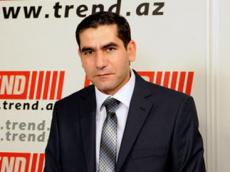|
|
TODAY.AZ / Analytics
Gas flaring keeps Iran in third place among nations
24 December 2013 [10:42] - TODAY.AZ
 Iran's flared gas level remains high, despite an order from the country's top leader Ayatollah Ali Khamanei's order to put out flares in Dec. 2010 during his visit to the South Pars gas field.
Iran's flared gas level remains high, despite an order from the country's top leader Ayatollah Ali Khamanei's order to put out flares in Dec. 2010 during his visit to the South Pars gas field.According to the latest official statistics, Iran's total flared gas amount has remained unchanged since 2011 at about 40 million cubic meters per day.
An October 2013 report, produced under the World Bank Global Gas Flaring Reduction Partnership (GGFR) put Iran in third place among nations in terms of flaring gas for 2011. New statistics are unavailable, but comparing GGFR's figures with Iran's latest statistics published in September indicates there has been no progress.
GGFR says 360 million tons of carbon dioxide was released into the atmosphere totally by burning 140 bcm of flared gas in 2011.
The deputy head of Iran Energy Efficiency Organization, Abdolreza Assadi said in September 2013 that Iran has 40 projects to cut 40 mcm of gas flaring and is attempting to bring the burnt gas to a minimum level by 2015.
The U.S. Energy Information Administration also reported in March 2013 that Iran's flared gas amount in 2011 was 0.6 trillion cubic feet, equal to about 45 million cubic meters of gas per day.
During this year, about 30 percent of Iran's total associated natural gas production was flared.
But this is just the beginning of the story. The problem is greater than associated gas gathering projects.
Iran's Fars News Agency reported on Dec. 23 that there are 45 flares in the South Pars gas field.
According to the latest statistics, about 7 mcm of gas is burnt in 10 active phases of this field in a day, indicating a 77 percent decrease compared to six years ago.
However, while Iran is preparing to implement new phases of South Pars, most of them are using the same the technology used in previous phases. Fars News Agency reported that the equipment of Phases 15 and 16 (which are 92 percent developed and expected to be come on stream by July) are similar to previous phases.
This high level of flared gas is occurring when Iran expects to face a 200 mcm gas shortage this winter, according to the Iranian deputy oil minister Hamidreza Araqi's statement on Dec.13.
He said that Iran's total gas refining capacity with gas imports volume (about 13 million cubic meters per day from Turkmenistan) equal 500 mcmpd together, while it is expected the consumption level would reach about 700 mcmpd in the winter.
Iran ranks first in term of gas reserves amount in the world, holding 33.6 trillion cubic meters equals to 18 percent of the total global gas reserves,
Dalga Khatinoglu /Trend/
URL: http://www.today.az/news/analytics/129427.html
 Print version
Print version
Views: 2605
Connect with us. Get latest news and updates.
See Also
- 27 December 2025 [17:46]
Babayan breaks silence as Garabagh Armenians’ fate becomes political weapon - 27 December 2025 [13:06]
Russia’s use of Azerbaijani migrants exposes dark economics of war [OPINION] - 27 December 2025 [08:30]
Sport, soft power, and Azerbaijan’s growing global profile - 25 December 2025 [08:30]
Post-war Garabagh as window into Azerbaijan’s centralised governance model - 24 December 2025 [19:15]
UN report debunks Taliban claims on terrorism, highlights persistent threats from Afghan soil - 19 December 2025 [14:07]
France’s turn to private armies risks tearing Western alliance apart - 18 December 2025 [20:19]
US–Venezuela tensions escalate as Washington expands oil sanctions and naval operations - 18 December 2025 [08:30]
Energy security meets climate goals in Baku-Abu Dhabi strategic partnership - 17 December 2025 [20:14]
Cotton cultivation boom links tradition with modern value-chain growth - 17 December 2025 [12:35]
Azerbaijan, UAE deepen strategic alignment across energy to digital sport
Most Popular
 Pakistan’s expanding defence partnerships put Azerbaijan in strategic spotlight
Pakistan’s expanding defence partnerships put Azerbaijan in strategic spotlight
 Baku ask world uncomfortable questions. We are waiting for response
Baku ask world uncomfortable questions. We are waiting for response
 VP Y?lmaz highlights economic, security, climate agenda amid regional cooperation move
VP Y?lmaz highlights economic, security, climate agenda amid regional cooperation move
 Korean tech firms reveal AI robots at CES 2026
Korean tech firms reveal AI robots at CES 2026
 Azerbaijan, UN discuss green energy and SDG roadmap
Azerbaijan, UN discuss green energy and SDG roadmap
 China accelerates maglev flatcar to 700 km/h
China accelerates maglev flatcar to 700 km/h
 Master classes on accordion and mugham singing held in Yevlakh
Master classes on accordion and mugham singing held in Yevlakh
